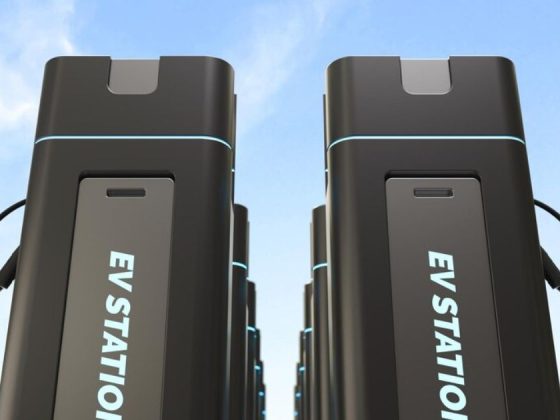In 2025, the computing landscape is transforming with the emergence of screenless laptops, driven by augmented reality (AR) advancements. Devices like the Spacetop are at the forefront of this revolution, offering users a virtual workspace that transcends the limitations of traditional screens. These AR laptops redefine productivity, privacy, and portability by projecting a 100-inch virtual display into the user’s environment.
The Evolution of Computing Devices
From Desktops to Laptops
The journey of personal computing has been a remarkable evolution, beginning with massive mainframe computers of the mid-20th century that were so large and complex that they required entire rooms to operate. These early machines, such as the ENIAC and UNIVAC, were primarily used by governments and large institutions due to their high cost, limited accessibility, and specialized operational requirements.
The 1970s and 1980s marked the emergence of the first proper desktop personal computers, including models like the Apple II, IBM PC, and Commodore 64. These systems brought computing into homes and small businesses for the first time, dramatically changing the technological landscape. Still, these early desktops were heavy, required constant connection to a power source, and offered limited mobility.
A transformative shift occurred in the late 20th century with the introduction of laptops—compact, battery-powered computers designed for portability. Early models, such as the Osborne 1 and later the IBM ThinkPad, were instrumental in showing that computing could be done on the go. Over time, advancements in microprocessors, battery life, and lightweight materials led to increasingly powerful and portable devices.
Laptops evolved into essential tools for professionals, students, and creatives, enabling work from virtually anywhere—whether in airports, coffee shops, classrooms, or remote offices. This shift played a pivotal role in fostering mobility and flexibility, influencing the rise of telecommuting, digital nomadism, and a more mobile approach to productivity.
Today, laptops evolve alongside tablets and hybrid devices, further blurring the lines between mobility and performance and underscoring how far personal computing has come since its room-sized origins.
The Era of Touchscreens and Tablets
The early 2000s marked a pivotal moment in the evolution of personal computing with the widespread introduction of touchscreen technology. Although touchscreens had existed in limited forms earlier, they became practical and mainstream during this period, thanks to advances in capacitive touch sensing, display resolution, and mobile operating systems.
This innovation led to the rapid rise of tablets and smartphones—compact, versatile devices that revolutionized how people interacted with technology. Products like the Apple iPhone (2007) and iPad (2010), as well as Android-based smartphones and tablets, brought computing power to the palm. These devices featured intuitive, finger-driven interfaces that made technology accessible to a broader audience, including young children and those with little technical experience.
Touchscreens significantly enhanced mobility, freeing users from bulky hardware and fixed workstations. The ability to browse, communicate, create content, and access information on the go redefined everyday computing tasks and contributed to the era of always-connected digital lifestyles.
However, this shift also exposed the limitations of traditional input methods. Keyboards and mice, while still essential for productivity and precision work, felt increasingly out of place in a world dominated by taps, swipes, and gestures. Software and hardware designers faced the challenge of adapting user interfaces for smaller screens and reimagining workflows for touch-first environments. This led to the development of on-screen keyboards, voice input, gesture controls, and stylus support, shaping the user experience in ways that continue to influence device design today.
The Emergence of Augmented Reality
Augmented reality (AR) began to gain significant traction in the 2010s, primarily through innovations in gaming and entertainment. Unlike virtual reality, which immerses users in entirely digital environments, AR overlays digital content onto the real world, creating a blended experience that enhances how users interact with their surroundings. Early mainstream interest in AR was driven by mobile applications—most notably games like Pokémon GO (2016), which brought location-based gameplay to millions of smartphones and introduced the general public to AR’s immersive possibilities.
Meanwhile, tech giants and startups began investing in more advanced AR hardware. Microsoft unveiled the HoloLens in 2016, positioning it as a tool for enterprise and creative use. The HoloLens allowed users to interact with 3D holograms mapped onto their real-world environments, offering use cases ranging from industrial design and remote collaboration to medical training. Similarly, Magic Leap introduced its AR headset with a bold vision of revolutionizing how people interact with digital content through spatial computing.
Despite the groundbreaking nature of these devices, AR headsets of the 2010s were often met with practical limitations. High costs, limited fields of view, short battery life, and bulky form factors made them impractical for widespread, everyday use. As a result, AR during this period remained largely experimental or confined to niche applications in specialized fields such as manufacturing, healthcare, and design.
Nevertheless, this era laid the groundwork for future developments in AR by proving its potential. Advances in sensors, display technology, and processing power continue to push AR toward more mainstream adoption, signaling that the vision of seamlessly integrating digital content into the real world may be fully realized.
The Spacetop: A Glimpse into the Future
What is the Spacetop?
The Spacetop, created by technology pioneer Sightful, marks a significant leap in augmented reality (AR) computing, revolutionizing how digital content is experienced and interacted with. Unlike traditional laptops, it eliminates the physical screen. Instead, lightweight AR glasses project a vast virtual display—comparable to a 100-inch monitor—into the user’s environment. This floating digital workspace can be resized, repositioned, and rearranged, offering all the advantages of a multi-monitor setup without the bulk or mess of conventional screens.
This innovative approach enhances mobility, privacy, and immersion. Since the virtual display is only visible to the wearer, sensitive information remains private, even in public spaces. The AR interface further facilitates intuitive, hands-on engagement with applications in 3D space, making it ideal for multitasking, creative work, and remote collaboration. By combining cutting-edge AR technology with familiar laptop features like a keyboard and trackpad, the Spacetop bridges the gap between traditional computing and the future of screenless devices, introducing a new and exciting way to interact with digital content.
Design and Build
Merging cutting-edge innovation with practical design, the Spacetop reimagines the traditional laptop by removing the screen while retaining key features like the built-in keyboard and trackpad. The AR glasses are securely housed within the device’s frame, safeguarded by a sturdy casing. This compact, streamlined design prioritizes portability without compromising functionality or user experience. Combining futuristic design with everyday practicality, the Spacetop maintains the familiar laptop shape, minus the screen, while offering an efficient, durable setup that is easy to carry and use.
Technical Specifications
Equipped with a Qualcomm Snapdragon QCS8550 processor, 16GB of RAM, and 256GB of storage, the Spacetop delivers seamless performance and ample capacity for daily use. The AR glasses offer a smooth 90Hz refresh rate for responsive visuals. Operating on SpaceOS, a custom Android-based system, the device is tailored explicitly for immersive augmented reality experiences.
User Experience
The Spacetop provides a seamless and user-friendly interaction experience. Its AR glasses project a virtual workspace that can be controlled using the keyboard and trackpad, allowing applications to be resized and arranged freely in a three-dimensional space. This configuration creates an exceptionally immersive and flexible digital space. Gesture-based controls further enhance usability by enabling touch-free interaction with the system.
Advantages of Screenless Computing
Enhanced Privacy
A key advantage of screenless computing is its ability to enhance privacy. Working in public spaces with traditional laptops often means others can view your screen. The Spacetop’s virtual display is visible only to the wearer, ensuring that sensitive information remains private.
Portability
The Spacetop’s compact design makes it highly portable. Users can carry a multi-monitor setup in a device that fits into a standard backpack. This portability mainly benefits professionals who travel frequently and require a flexible workspace.
Immersive Experience
The AR interface provides an immersive computing experience. Users can interact with applications in a 3D space, offering a more natural and engaging way to work. This immersive environment can enhance productivity and creativity.
Challenges and Considerations
Adaptation to New Interface
Transitioning from traditional laptops to AR-based systems requires an adjustment period. Users must become accustomed to interacting with virtual interfaces and managing applications in a 3D space. While the Spacetop’s design aims to make this transition seamless, it may still pose a learning curve for some users.
Battery Life
Although the Spacetop is presently optimized for productivity-focused use, the broader possibilities of screenless computing span numerous fields and future innovations. Users may experience reduced battery performance when using the device for extended periods, especially when running resource-intensive applications. Managing power consumption will be crucial for maximizing the device’s usability.
Social Acceptance
Wearing AR glasses in public spaces may attract attention and be perceived as socially unconventional. As AR technology becomes more prevalent, societal norms and perceptions will evolve, potentially influencing the adoption of devices like the Spacetop.
The Future of Screenless Laptops
Integration with Other Technologies
The evolution of screenless computing hinges on its fusion with other cutting-edge technologies. When augmented reality converges with artificial intelligence, machine learning, and cloud infrastructure, it paves the way for a more innovative, adaptive digital ecosystem. AI could intelligently orchestrate virtual workspace layouts, while cloud platforms deliver the computational muscle for demanding operations, crafting a seamless, high-performance user experience untethered from physical screens.
Expansion of Use Cases
Though presently optimized for productivity, the Spacetop hints at the expansive frontier of screenless computing. Its core technology holds promise far beyond office work—from transforming gaming into deeply immersive worlds to reshaping fields like digital design and 3D modeling with responsive, spatially aware interfaces. Augmented reality laptops stand poised to redefine user interaction across creative, technical, and entertainment sectors.
Standardization and Accessibility
Standardization and accessibility will be essential for screenless computing to become widely adopted. Developing universal AR standards and ensuring that devices are affordable and compatible with existing software ecosystems will be crucial steps toward widespread acceptance.
Screenless Laptops and the Future of Computing
Personal computing has continually advanced towards enhanced mobility and user-centric designs, from room-sized mainframes to smartphones. Screenless laptops, such as the Spacetop, represent the next phase of this evolution, utilizing augmented reality to replace traditional screens with immersive virtual workspaces. While usability and social adoption challenges remain, this transition signals a more private, portable, and flexible computing future, where digital environments blend effortlessly with the physical world.





